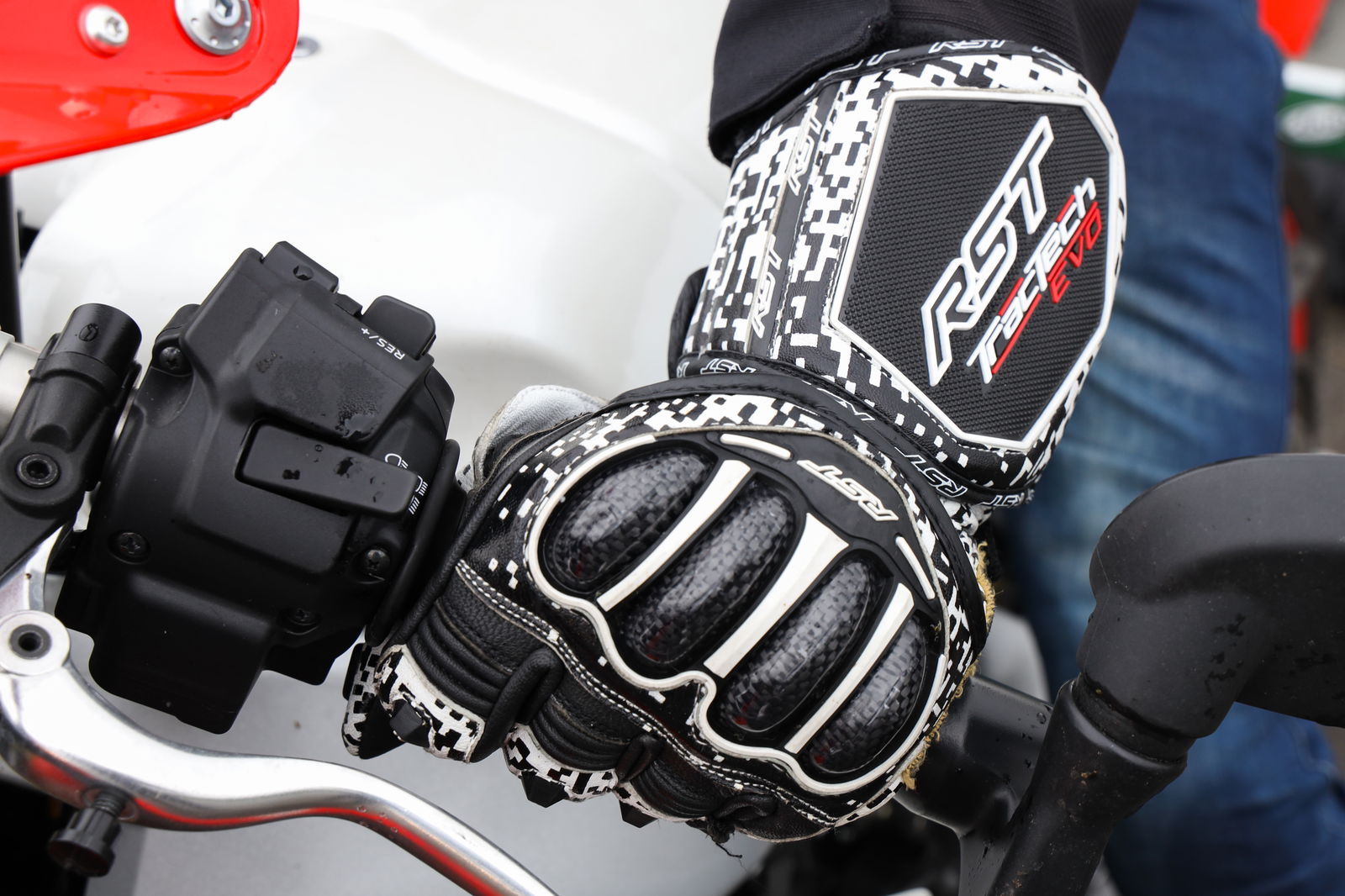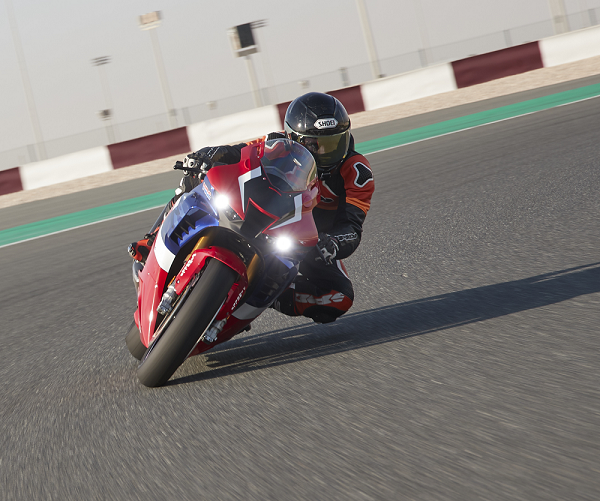Shark Ridill 2 Review: The Ideal Helmet For New Riders?
The Ridill 2 is Shark’s entry-level lid, boasting a high level of protection, and premium features at a low price

Shark has a new entry-level lid on the market in the form of the handsome-looking, and nicely specced, Ridill 2.
The full-face, and UN ECE 22.06 certified, lid was launched last September and features a sleek design that is reminiscent of the style of the more premium (and more expensive) Spartan RS.
We’ve been testing the helmet for the last month, alongside the Shark Aeron GP we’ve already reviewed. During that time we’ve covered many hundreds of miles in it, riding sports bikes, nakeds, and adventure motorcycles.
Price, colours, sizes

The helmet comes in 19 colours and designs, ranging from bright and colourful options through to plain black, white and matt black options.
Part of keeping the cost of the Ridill 2 extremely competitive is down to two exterior shell sizes being available. They cover interior sizes from XS (53/54cm) through to XXL (63/64cm). That does mean that should you be at the smaller end of the sizing chart, you will have to put up with a slightly larger exterior shell size than you probably need, although the overall design of the helmet is clean and sleek which will help it to look less bulky.
Pricing for the helmet starts at £139.99 for the blank options, rising to £179.99 for the more colourful and eye-catching graphic helmets.
More information on the Shark Ridill 2 can be found on the Nevis UK website.
Weight
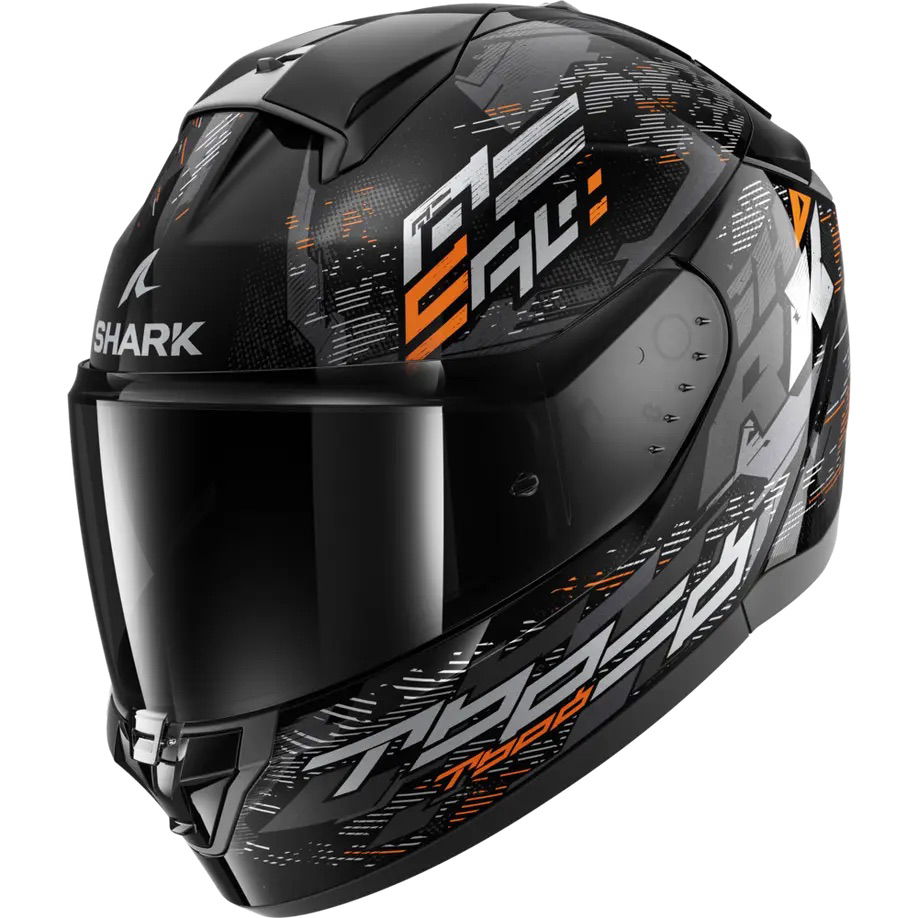
The quoted 1,470g weight stated on the back of the helmet aligns with the one I have, which came up at 1,474g on my digital scales. It’s worth noting that the measured weight of this product is only 57g more than that of the much pricier, and carbon fibre (the Ridill 2 features a high-impact Lexan polycarbonate shell) Shark Aeron GP - the review of which you can view here.
That puts the Ridill 2 right in line with the entry-level (and very budget) Targo from MT Helmets, and slightly lighter than the Caberg Avalon X which matches the Ridill 2 on price almost exactly.
Comfort
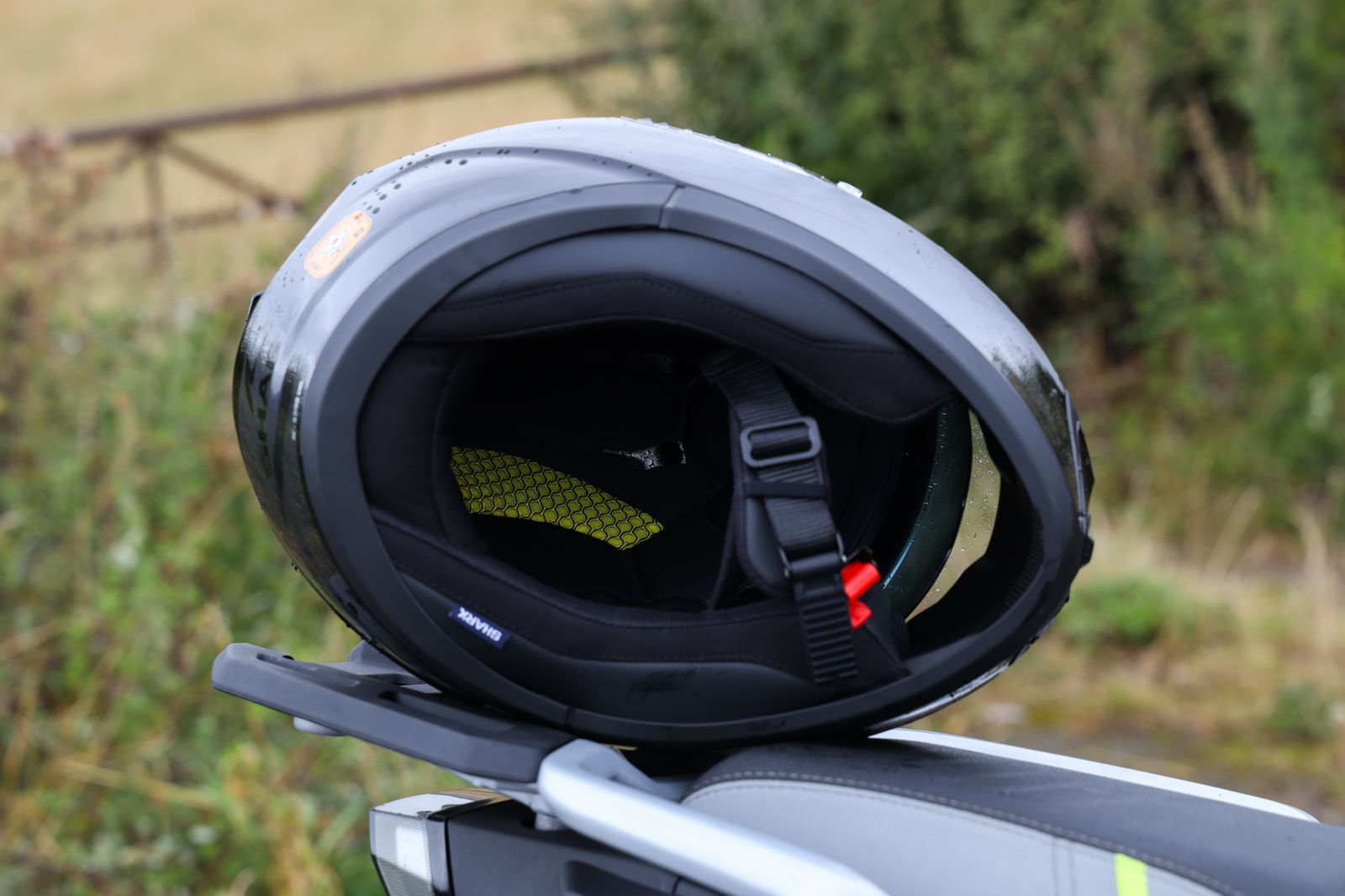
The interior of the lid comprises a multi-density EPS liner which is topped by padding which is soft to the touch and comfortable against my skin. The foam in the padding does have a firm feel to it, meaning the lid feels nicely secure on my head and doesn’t get moved from side to side when riding at speed. The helmet I have is a medium (57/58cm) item and the overall fit I’d describe as very good. My head feels very secure when in use and without squashing my cheeks together like you get with a lot of other lids.
Another point of note is the wide opening of the helmet, which makes taking the Ridill 2 on and off very easy and free of any discomfort. With most of my other lids, I need to wiggle my hand up the side to straighten out my ears, but thanks to the wide aperture of the Ridill 2, and the design of the interior especially around my significantly sized lugs, they ‘ping’ into a comfortable and normal position on their own.
The fastening system on the Ridill 2 is a micro-metric buckle which isn’t everyone’s first choice. It does though mean you can do the lid up while wearing gloves (because we all put them on before our lid from time to time), which is a handy feature. The strap is padded with a soft strap protector, meaning it still feels comfortable under my chin even when the helmet is done up fairly tightly.
Visor
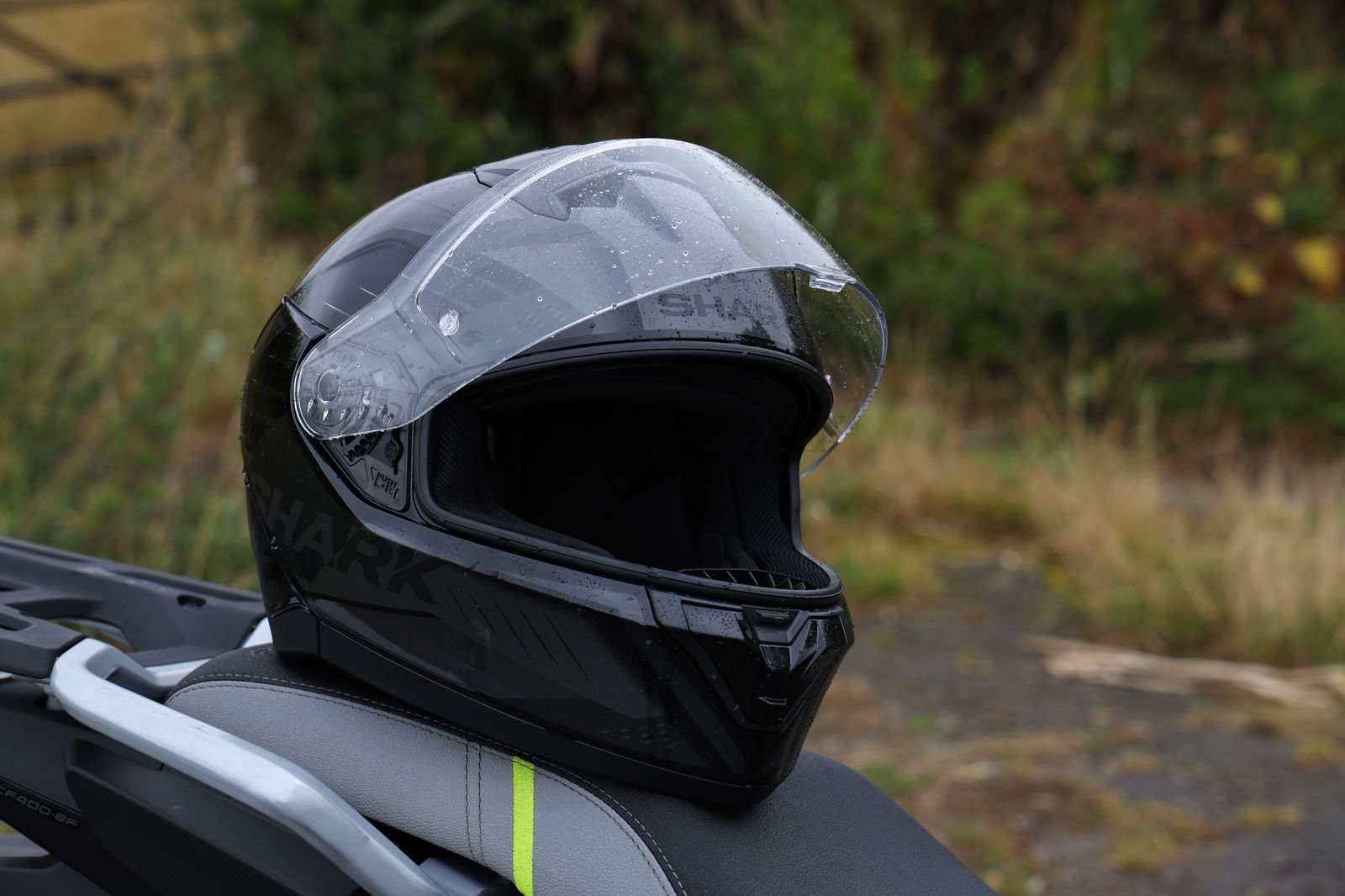
The visor of the Ridill 2 is an optical Class 1 item, with an anti-scratch coating and a no-tool visor removal system. To remove the visor you lift it to its fullest position and press the buttons on the side of the helmet simultaneously. Once these buttons ‘pop’ inwards you can lift the visor further still and pull it out from its mounting points. Compared to some other systems, the no-tool system on the Ridill 2 makes removing the visor very quick and easy, meaning cleaning the visor, or swapping it out for one of the tinted or iridium options, is a very simple task.
Visually the visor is great, with a wide field of view and no distortion whatsoever when riding at day or night. It is a Pinlock-ready product, meaning the fixing points for a Pinlock 70 anti-fog insert are provided, although you’ll need to buy this separately. I did find that without an insert fitted, I did have some fogging if I was breathing heavily with the vents closed. Opening the chin vent did help to alleviate this, though.
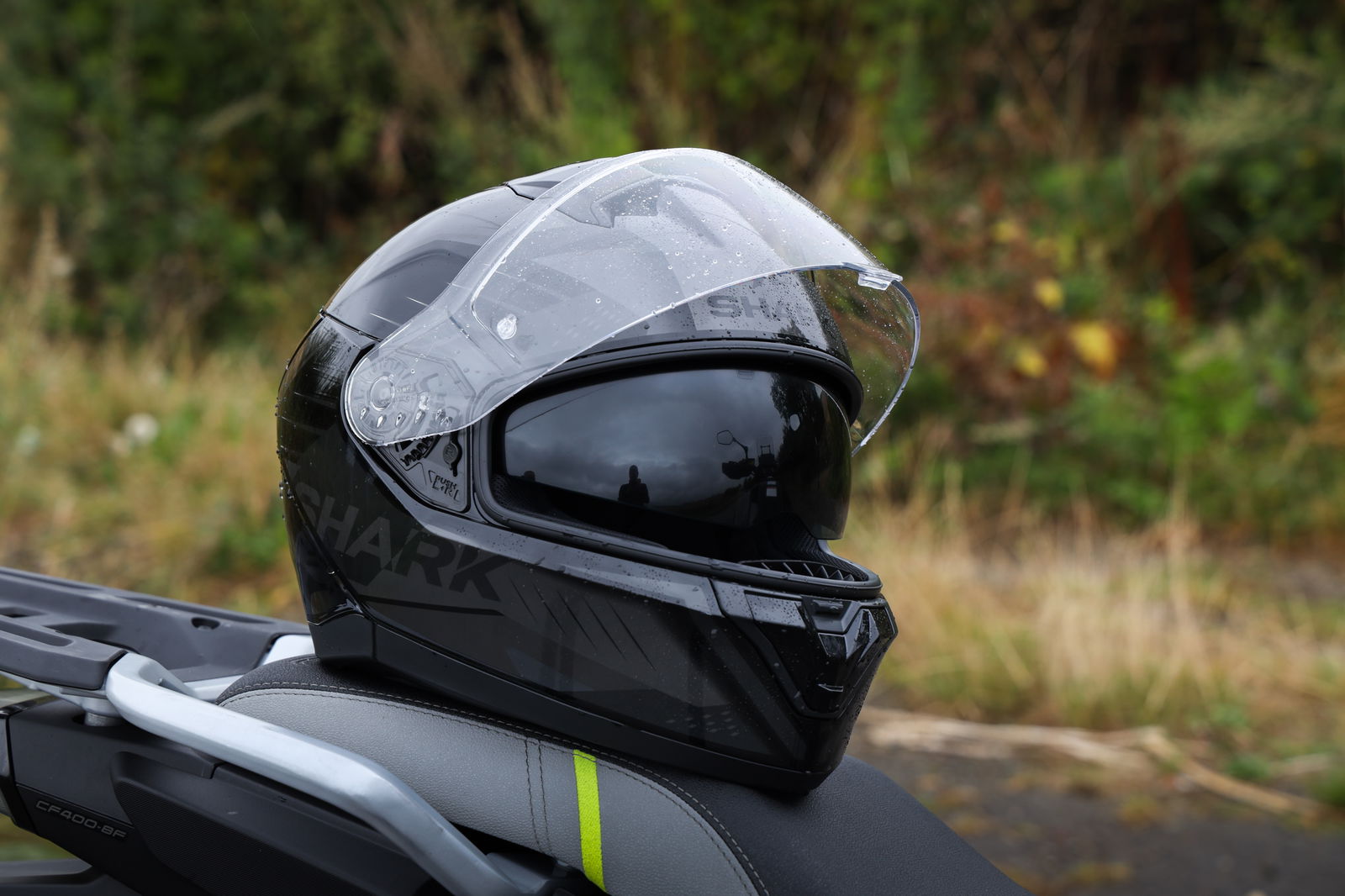
The visor on the Ridill 2 features a ratchet system which I’m not normally a huge fan of. That said it’s not quite as aggressively noisy when opening and closing as I’ve found on some other entry-level lids. You can also crack the visor open just a millimetre which was helpful when I was riding in wet and humid weather to help prevent undue fogging.
The Ridill 2 also features a drop-down sun visor, which is a nice touch and not a given at this price point. Like other Shark helmets, you drop the sun visor down using the large slider on the top of the helmet, which is a design I prefer over more fiddly buttons mounted on the underside of the lid.
Optically the sun visor is good, although it doesn’t quite cover all of my eyeline, and there is still a section at the bottom of my field of view that is visible. It’s also worth noting that in colder or wetter weather, fogging on the sun visor can sometimes be an issue, and if you can apply some anti-fog treatment, it would be worthwhile doing so.
Vents
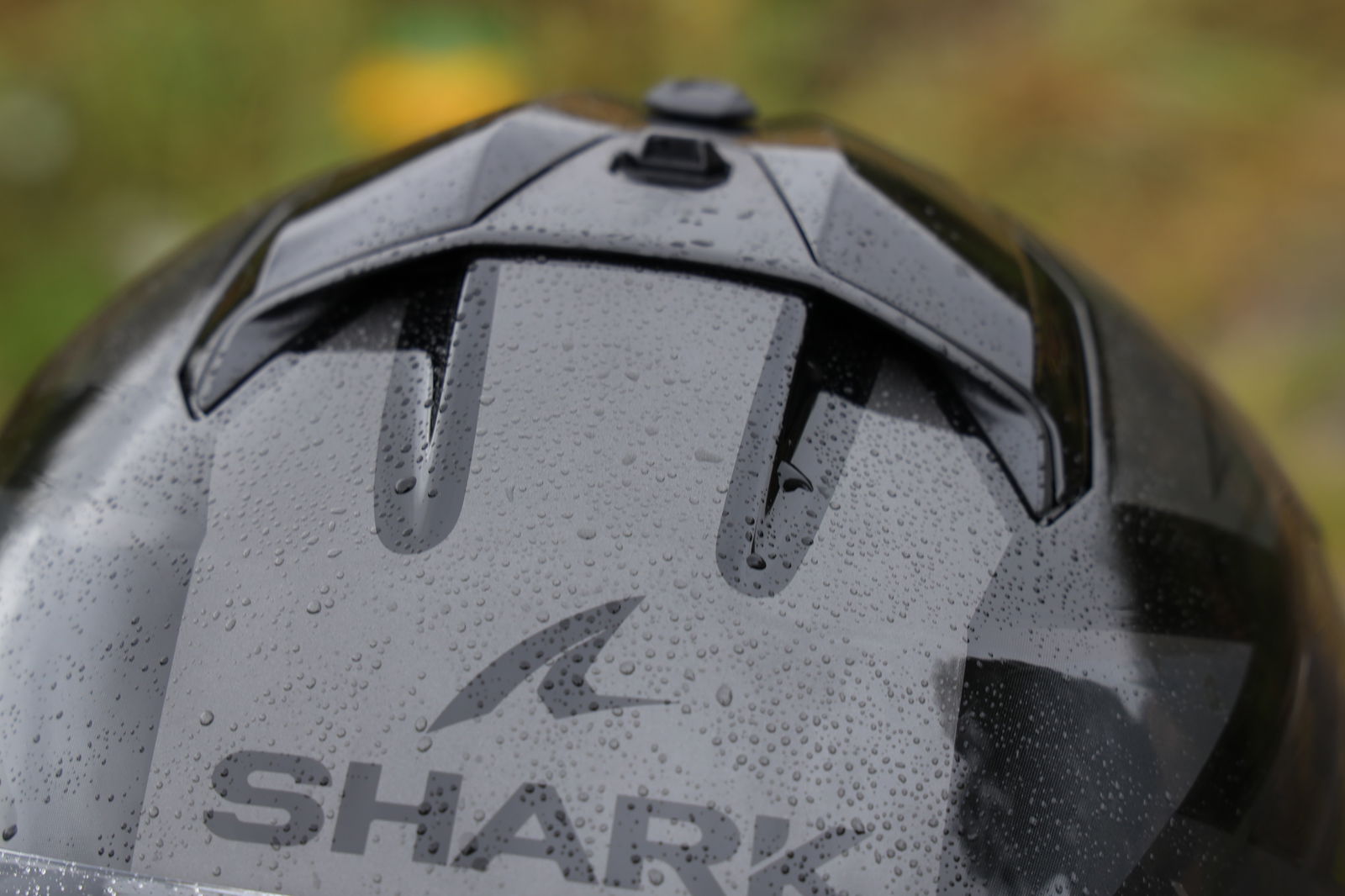
The Ridill 2 comes equipped with three operable vents, one on the chin, and two on the top of the lid that are opened simultaneously by using the same lever. All the vents can be opened and closed with ease while wearing gloves, although it took me a few times to bullseye the lever on top of the helmet. The rear of the helmet features two exhaust ports to help keep a consistent flow through the lining of the lid.
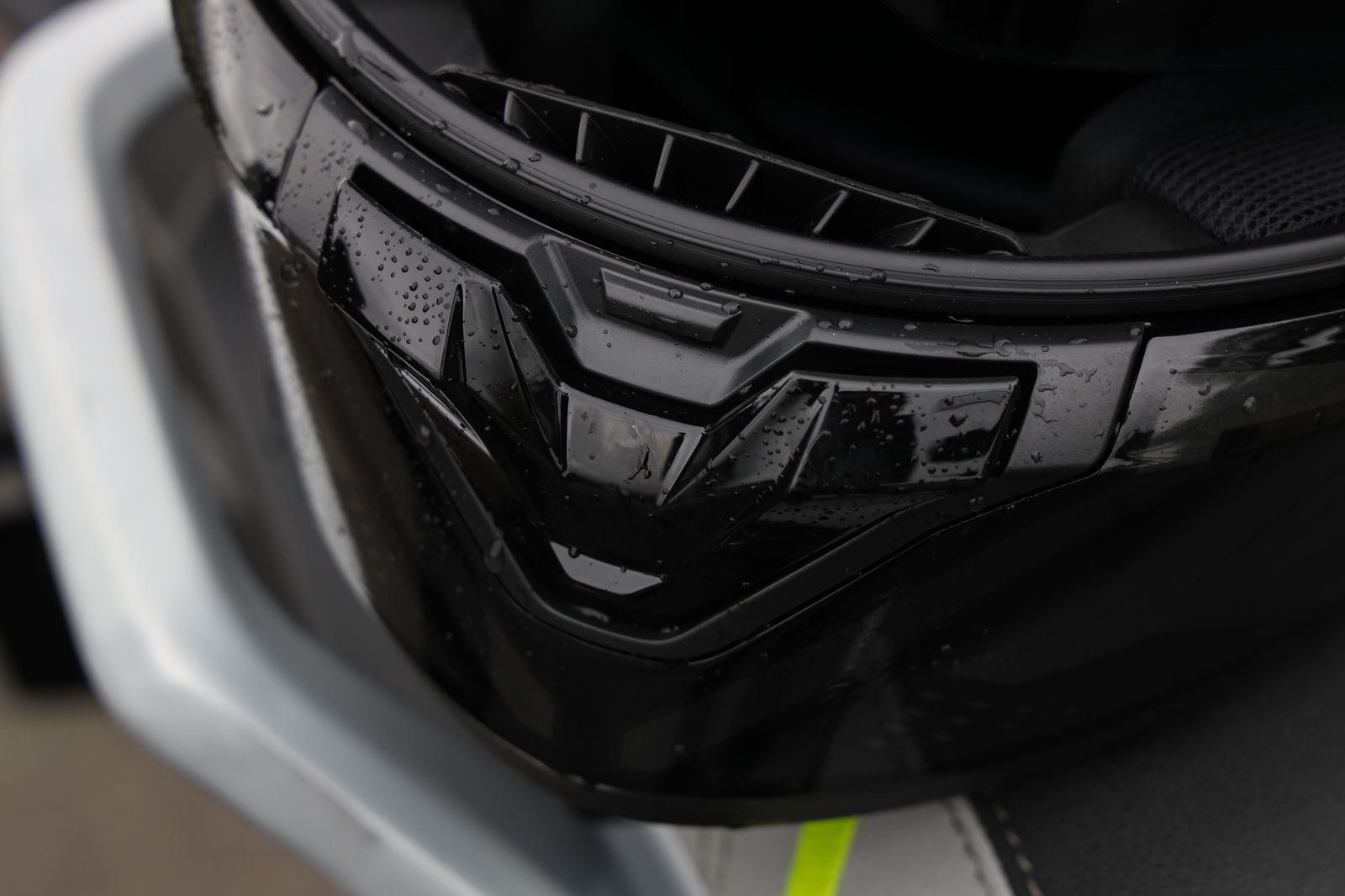
The ventilation of the helmet is more than adequate, and thanks to my shaved head I can feel the benefit of the top vents when opening and closing them. As mentioned further up the page, opening the chin vent helped to cure some fogging I had while I was testing it, but it feels to me like it directs the air more at the visor than at my face.
That’s not a huge issue, as the interior of the lid is very airy thanks to the lack of a chin skirt. That was fine when testing the helmet in August and September when the weather has been mild, it might have me reaching for my fleece neck tube as the weather turns colder, though.
Stability and noise

As this is an entry-level lid it's devoid of any huge aerodynamic elements or winglets. Thanks to that the outer shell is relatively smooth, which makes it a quiet helmet to use at motorway speeds. Obviously, earplugs should be worn on a ride of any great distance, although I’d be happy to take a short trip at low speed wearing the Ridill 2 without too much worry.
The lack of aero-elements on the Riddil 2 (you do get a small rear-mounted spoiler, but that’s it) I did experience a small amount of buffeting at motorway speeds, especially while riding the faired Yamaha XSR900 GP. It’s not horrendous though, and it’s the same story when glancing over my shoulder on the motorway.
Should you buy a Shark Ridill 2?

For someone embarking on their two-wheeled career, splurging a small fortune on a motorcycle helmet is a daunting prospect. So daunting in fact that it can push people to buy from less well-known or well-respected brands - or even worse, grabbing a secondhand lid from eBay or Facebook Marketplace. Having a well-known brand like Shark offering such a good value lid should help to prevent people from needing to do that, and you're placing your trust in a company that supplies some of the best riders on the planet.
On top of that, the Ridill 2 is packed with some neat features and design details like being Pinlock-ready while also having a drop-down sun visor. It’s also extremely comfortable, and the airy nature of the lid would make it the perfect thing to use in very hot weather.

